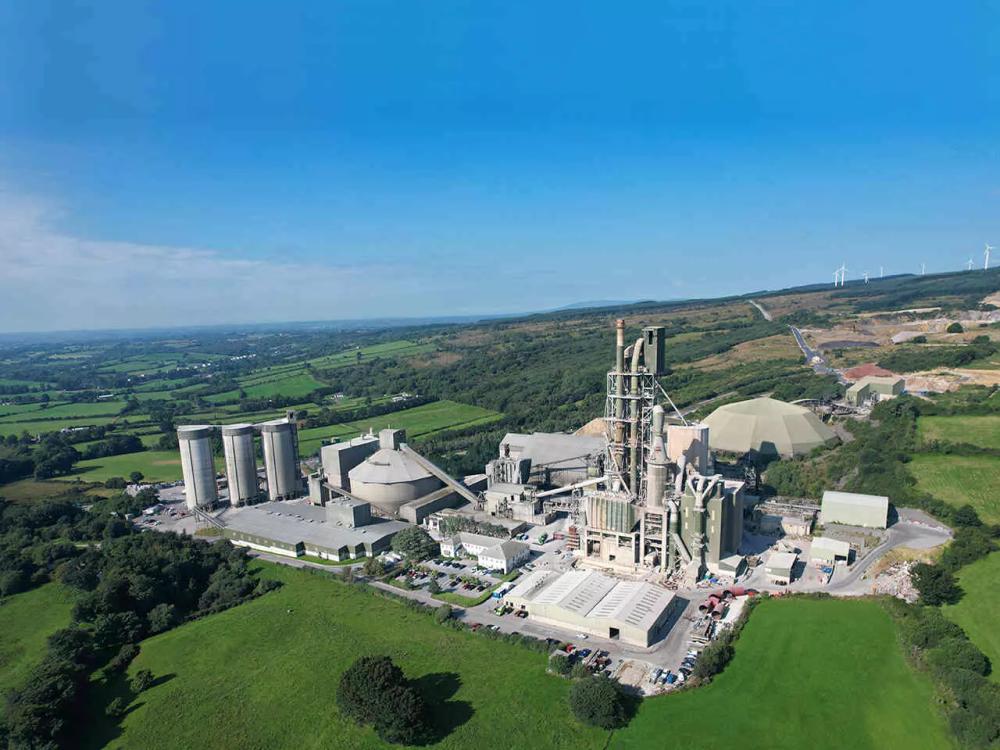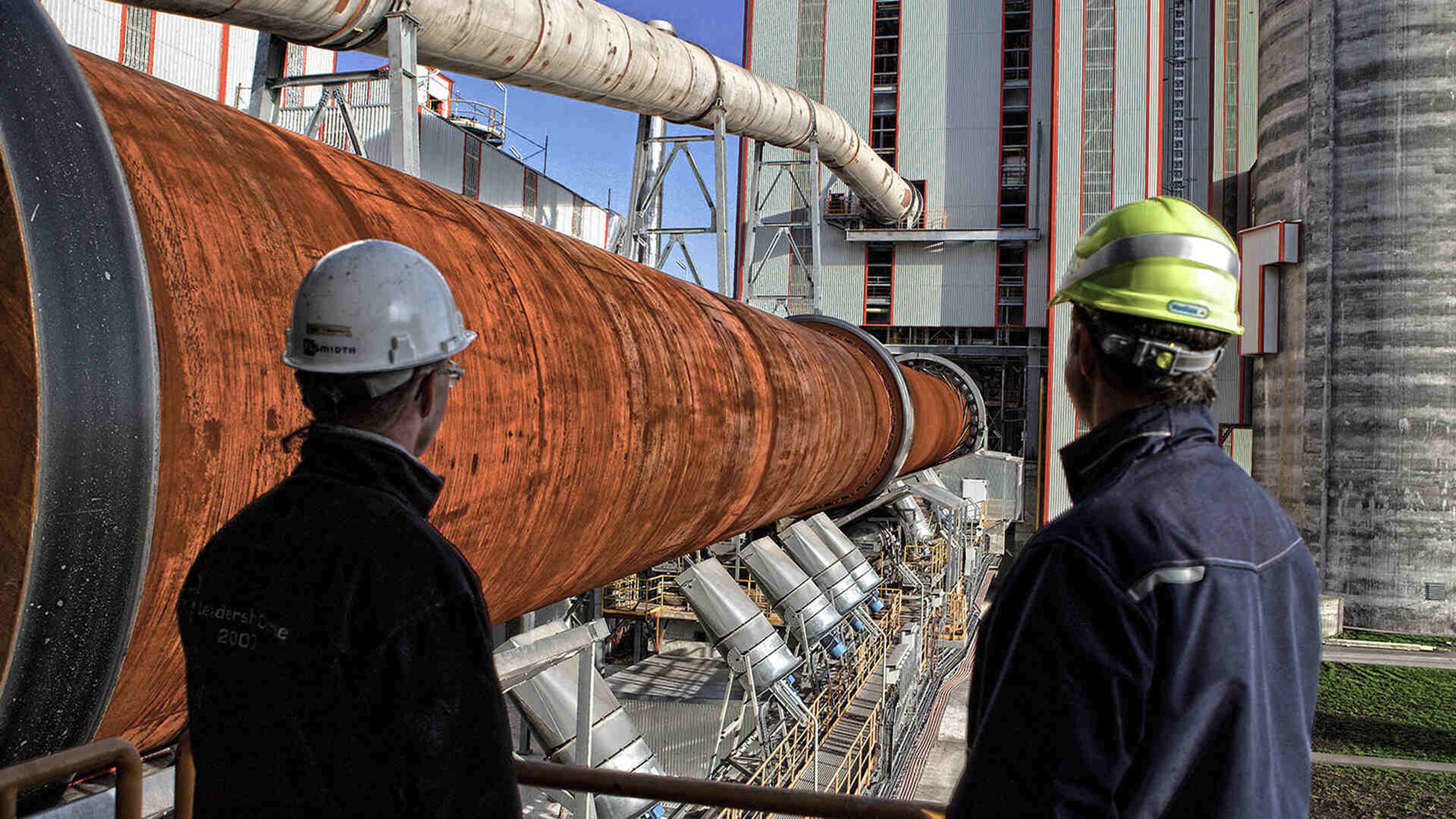article
Mannok and FLSmidth Cement successfully make cement production more sustainable with innovative technology to displace fossil fuels
The team in Mannok’s cement facilities are celebrating the successful implementation of the FUELFLEX® Pyrolyzer, a new combustion system which is set to eliminate the need for fossil fuels in the clinker production process at the plant, the most carbon intensive stage of cement production.
Groundbreaking technology allows more efficient use of alternative fuels
The team in Mannok’s cement facilities are celebrating the successful implementation of the FUELFLEX® Pyrolyzer , a new combustion system which is set to eliminate the need for fossil fuels in the clinker production process at the plant, the most carbon intensive stage of cement production.
We partnered with Mannok on the development of the world’s first pilot of the FUELFLEX Pyrolyzer back in 2018, and we have collaborated in the design and testing of the system over the last three years, as our Research and Development Specialist, Lars Skaarup Jensen, explains, “When we reached out to Mannok, the FUELFLEX was still very much at concept stage. We’d performed some testing in our lab in Denmark, but that is very different to deployment in a fully operational cement works.
From concept to reality
With the development and testing of completely new technology like this, you can expect it to throw up some issues along the way, and this pilot was not without its challenges. It required design revisions following initial tests to ensure continuous running of the FUELFLEX, which involved expertise from both Mannok and our team at FLSmidth Cement. These revisions addressed issues which could only be identified through real-life testing, and we are very pleased that the system has now been running smoothly and effectively, and has remained in operation for around four months now.
It was a brave decision by Mannok to partner with us in the development of this world first technology, and it took great commitment and expertise on both sides to achieve a successful outcome which has enormous potential for cement producers globally.”
Perseverance rewarded
With the technology operating successfully at the Irish cement producer’s facilities since July 2022, it has already enabled Mannok to cut its fossil fuel use in the clinker production calcination process, and the company now aims to completely eliminate these fossil fuels by early in 2023.
With cement production under a significant spotlight in the decarbonisation stakes, such a development could be a game changer for the industry, and has already gained international attention, with delegations from Europe and Asia visiting the Irish plant in recent months to see the FUELFLEX in action. The production of clinker, a precursor to cement, is the most energy intensive part of the process, and accounts for the largest portion of fossil fuel use, 60% of all fossil fuels in Mannok’s case.

The ability to completely displace this use of coal is undoubtedly a major leap forward for the industry, and for Mannok, a company which has clearly and publicly defined its ambitious decarbonisation targets, as Operations Director, Kevin Lunney, explains,
“The key challenge for the entire cement industry is decarbonisation, and it’s our primary area of focus. We’ve set ambitious targets to reduce our carbon emissions by a third by the end of the decade, and go on to achieve net zero by 2050. This requires innovative thinking, and we’re very proud to partner with FLSmidth Cement and to help provide leadership in this space.
KEVIN LUNNEY - Operations Director, Mannok Cement
Beyond fossil fuel displacement and the resulting reduced carbon emissions, another environmental benefit of this new technology is the reduction in Nitrogen Oxides, or NOx emissions, which the team at Mannok hadn’t really expected to achieve at the outset. There are very strict limits to permitted NOx emissions, and Mannok, like many cement producers, has used significant quantities of ammonia water to ensure compliance with these regulatory limits. Since the FUELFLEX has been operational, the company has practically eliminated its use of ammonia water, and is running at around 20% below its permitted NOx limits, which brings an unexpected commercial benefit by significantly reducing the need for expensive ammonia water.
The new FUELFLEX system achieves all of this by enabling the increased use of SRF (solid recovered fuels) as an alternative energy source to coal in the production of clinker. The SRF is non-recyclable commercial waste, which would otherwise go to landfill, so this also serves a very beneficial waste management purpose, as Mannok’s Cement Process Manager, Damian Reilly, explains, “We’ve been using SRF in our clinker production since 2014, and have progressively displaced more coal, until we reached maximum capacity with our existing calciner set-up. As a new combustion system which improves the efficiency of our existing set-up, the FUELFLEX technology is set to enable full coal displacement with SRF.
The SRF we use is sourced from the counties immediately surrounding the plant, so we’re reducing shipping costs and carbon footprint of imported fossil fuels by increasing our capacity to replace it with locally sourced SRF. As well as the obvious environmental benefits, this SRF is a much more commercially viable fuel source, particularly given the surging energy costs, and the more SRF we can use in Ireland, the less will be exported to cement kilns across Europe, so it’s a win-win.” Before we approached the team at Mannok regarding the concept for the FUELFLEX technology, the cement producer was looking at another solution to increase its SRF use, the construction of a new, larger calciner at the plant.
No need for lengthy shutdown
The potential of an innovation which would negate the need for such a costly and disruptive solution was an attractive prospect for Mannok, and one which was ultimately deemed worth pursuing in partnership with the Danish Engineering firm. Paul Carron, Mannok’s Cement Engineering Manager, explains what the alternative would have meant for the company, saying, “Had we gone down the route of constructing a larger calciner, we’d be looking at several millions in capital investment and significant disruption to production for installation and maintenance. The FUELFLEX system is a much more compact solution which has been added relatively easily to our existing set-up, with minimal disruption to production. It’s a much less costly and disruptive solution, which also brings with it reduced maintenance requirements and health and safety risks.”

With such significant environmental and commercial benefits, FLSmidth Cement's FUELFLEX technology is likely to become a feature of cement production works across the globe, and for Mannok, this is the first major success in the company’s pursuit of net zero, with further significant innovation in sustainable energy already underway.
This article was initially published in World Cement's February 2023 issue.




